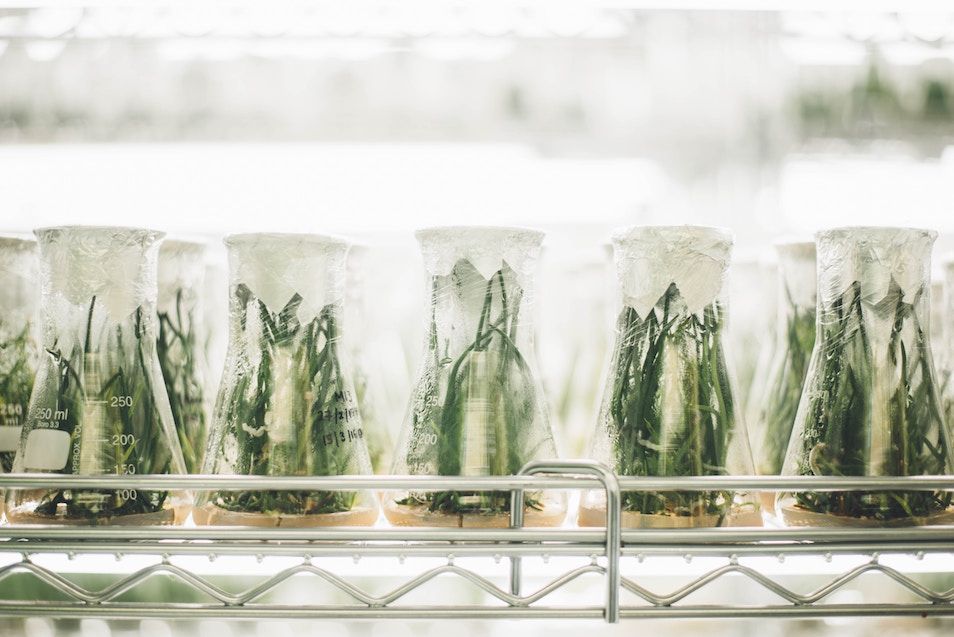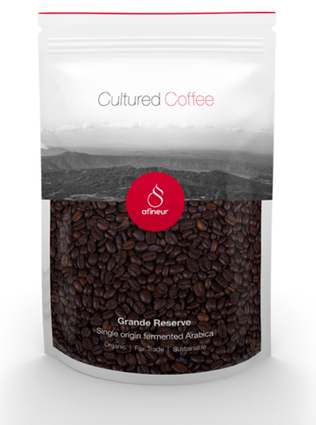From Biology to Technology
Synbio Consulting's Blog

Fostering the emergence of new competitive bioclusters – White Paper for Synbio Leap
How can we support pre-competitive activities in biotechnology? What infrastructure is critical to collaborative efforts? What are potential organizational models?
Synthetic Biology (SynBio) is characterized by a bottom-up approach to designing biological systems for specific purposes (Endy, 2005). In 2014, the European Commission defined the field as “the application of science, technology and engineering to facilitate and accelerate the design, manufacture and modification of genetic materials in living organisms”. It is a young field, but is now a global endeavor with research and development programs in many countries around the world. The ability to rapidly engineer organisms in laboratories by combining molecular biology tools with engineering principles holds “vast potential for the bioeconomy, and could dramatically transform high-impact fields such as agriculture, manufacturing, energy generation, and medicine.” (USA National Bioeconomy Blueprint 2012).
SynBio is unique in its highly multidisciplinary nature and that by ‘making biology easier to engineer’ it also facilitates ‘the contribution to scientific innovation from people who are not considered as professional experts in the traditional sense’ (Zhang 2012) including students, citizens and entrepreneurs. In this unique context, how can we support pre-competitive activities in biotechnology? What infrastructure is critical to collaborative efforts? What are potential organizational models?
A highly successful example of organizational model to foster synthetic biology is the iGEM competition in which hundreds of student teams from around the world work on SynBio projects, gather at MIT to showcase their achievements and make their work freely available on an opensource database. A searchable map of the hundreds of projects that have been done by students around the world was recently published (www.synbioconsulting.com/igem-synthetic-biologymap/). Since 2004, iGEM has played a crucial role in the ‘‘‘social’’ engineering’ of the upcoming generation of young scientists. iGEM ‘is seen to have significantly promoted a global open-access culture’, and by integrating so-called ‘human practice’ work in all projects it ‘also facilitates global exchange and dissemination of concerns over biosafety, biosecurity, IPR, ethics and public engagement’. Many nations, including China and the UK see iGEM as a strategic move to promote domestic progress in the life sciences (Zhang 2012). Much has to be learnt from this incentive driven approach to fostering the growth of synbio which makes learning and contributing to innovation engaging and rewarding.
Distributed innovation through gamification has shown a lot of potential to improve bioliteracy and contribute to the development of synbio. In other life science fields, games such as Foldit and EteRNA have been highly successful in capitalizing collective intelligence to answer fundamental questions about protein and RNA folding respectively, while simultaneously educating the players. In both games, players have matched and outperformed state of the art algorithmically computed solutions (Cooper 2010; Lee 2014). This approach has yet to be adapted for synbio but could provide an incredible tool to foster bioliteracy and constructive dialogue between actors.
Synbio entrepreneurship is still in its infancy. An overview of the different small and medium companies involved in the field is provided in the following link (SynbioProject map: http://www.synbioproject.org/sbmap/). Beyond possible regulatory burdens, education and access to seed funding would foster synbio entrepreneurship greatly. Nowadays, graduate programs are still geared towards tenure track in academia and do not reflect the reality of the work place. Data published in the National Science Board’s 2014 Science and Engineering Indicators show that a mere 29% of newly graduated life science PhDs (2010 data) will find a full time faculty position in the US. It is high time to introduce entrepreneurship and management skills (amongst others) into graduate programs. Beyond training, access to specific seed funding to kickstart companies is essential. Startup incubators such as YCombinator and Indie.Bio have recently been bringing a lot of fresh air into the synbio startup ecosystem by providing both support and founding.
From distributed innovation to gamification, and from entrepreneurship to science education, new organizational models are bound to revolutionize synbio. A collaborative effort should be made to foster the responsible and efficient growth of the field. In this process, knowledge should be exchanged and co-created between actors, and attention should be paid to embedding this new knowledge to minimize the mismatches between science, technology and their applications or uses (Roelofsen 2011) — in order to efficiently sprout new green bioeconomies around the World.
Exempts from a white paper written for Synbio Leap: a competitive fellowship for emerging leaders in biotechnology.

SynBio Mashup #24
The SynBio Mashup is a weekly review of articles and news related to synthetic biology and metabolic engineering. While we share most of this on our twitter feed, if you need to catch up on this week’s news just read ahead!
Oragenics and Intrexon’s Lantibiotic Platform Shows Promising Results
Oragenics, a company focusing on the development of antibiotics against infectious disease and probiotics for oral health in humans and animals and Intrexon, a company which has been focusing on building a synthetic biology platform to create biologically based products have been collaborating to generate lantibiotics. Lantibiotics are a new class of peptide antibiotics that are effective in the treatment of antibiotic-resistant bacteria. On July 28, 2015, the companies released positive data in a critical animal study for multiple compounds from Oragenics’ Mutacin 1140 lantibiotic platform. The compounds were subjected to a standard proof of concept animal model test to determine their efficacy against a clinically relevant C. difficile infection compared to a standard dose of vancomycin. The new drug candidate achieved a 100% animal survival rate in the trial, while vancomycin only achieved a 33% survival rate and the placebo control had a 0% survival rate.
The results of the trials helped Intrexon’s market cap exceed $6 billion and shares to reach an all time high of greater than $60. Investment analysts at Wunderlich last week valued Intrexon at $70 per share. Investors have high hopes for Intrexon as they now have a solid revenue stream due to their cattle-breeding platform and have various products that are in the works to reach the commercial market.
Soylent Hopes to Grow Food Replacement with Algae
During a failed startup attempt to create inexpensive cellphone towers in 2012, Rob Rhinehart realized that the food he was eating was not only “too expensive” but “nutritionally inadequate”. He decided to create his own food based only on the necessary nutrients for the human body, which he ordered off the Internet in mostly pill and powder form. The formula, a yellowish-beige liquid was named Soylent after “Soylent Green” – a film from 1973 where people in a dystopian future live off of mysterious wafers that turn out to be made of human flesh.
Rhinehart was able to live off Soylent for more than 30 days and it now constitutes about 90% of his diet. He is now trying to market the product as a complete food replacement for people who do not have the time or the money to consume traditional food. Soylent is now becoming a trend amongst those who drink it and people are manipulating the formula for their own specific needs. Soylent raised over $3 million dollars on the crowdfunding website Tilt, and in January, 2015 it raised $20 million in Series A funding to increase production and decrease costs to under $3 per meal. Rhinehart wants to make food so cheap that “only the rich will cook” and is hoping to use his formula to help solve global hunger.
Rob Rhinehart’s next idea for Soylent is to produce all of the nutrients of the product from bioengineered algae. Soylent partnered with Solazyme to produce algae based oil and in its current formulation 20% of the calories are made from algae. Rhinehart is hoping that algae based production can be a highly cost effective and environmentally friendly method for producing his product.
Emerging Ethics Issues as Gene Drive Technology Advances
Gene drive is the practice of “stimulating biased inheritance of particular genes to alter entire populations.” By introducing the same mutation to both chromosomes, “Selfish Genes” quickly spread through populations even if they are not advantageous to the host. Gene drive has recently been demonstrated in both yeast and in Drosophila.
Gene drive brings up bioethics issues because if a mutant strain, the mutation can spread quickly throughout an indigenous population. While this may seem bad, there are certain instances where this might be beneficial. For example, if a mutated strain of mosquitos that cannot carry malaria is released into the wild, it could prevent the transmission of the disease to humans.
As a result of the developments in gene-drive, on July 30th, 2015, the National Academy of Science held the first of several meetings over the next 15 months to find a balance between the positive and possible negative implications of gene-drive. Additionally, on July 30th Dr. Keven Esvelt, a bioengineer at Harvard Medical School and a group of his peers published a paper to define the containment strategies for gene-drive research performed in the lab. Dr. Esvelt is studying CRISPR gene-drive systems in the nematode Caenorhabditis elegan to determine what happens to the population as engineered DNA is passed on through generations. He is also testing ways of revoking the gene from the population if it becomes problematic. As our understanding and control of gene drive increases, it will be interesting to see how regulations evolve to account for this new technology.
Scientists Design First Functional Tethered Ribosome
Researchers at the University of Illinois at Chicago and Northwestern University have engineered a tethered ribosome. During normal cellular production of protein, there are two ribosomal subunits that come together around an mRNA. After the production of protein, the ribosomal subunits separate and are able to bind to a new mRNA to produce another protein. Until now it was believed that the binding and separating of ribosomal subunits was essential for the production of protein. Ribo-T not only worked effectively in vitro, but it also worked well enough to sustain normal protein production in bacterial cells lacking wild type ribosomes.
With the advent of Ribo-T, scientists will be able to get a better understanding about ribosomal function in vivo and may be able to use Ribo-T to generate unique, functional polymers, biological therapeutics and maybe one-day create non-biological polymers.
Researchers Engineer New Biosensors to Control and Communicate With Bacteria
A Wyss Institute team, led by Prof. George Church, has engineered new biosensors to enable a much more effective bi-directional communication with bacterial cells. The four biosensors are orthogonal to each other and rely on standardized inducible transcription regulators allowing for the precise control of gene expression.
These new biosensors effectively double the number of well-characterized and available inducible systems and are an invaluable tool for genetic engineering. When coupled with fluorescent readouts they can enable much better screening and significantly speed-up the design-test-build cycle as demonstrated in this paper.

SynBio Mashup #23
The SynBio Mashup is a weekly review of articles and news related to synthetic biology and metabolic engineering. While we share most of this on our twitter feed, if you need to catch up on this week’s news just read ahead!
Afineur Begins Kickstarter Campaign
Afineur launched their innovative Kickstarter campaign to revolutionize coffee flavor via controlled fermentations on Wednesday, July 29, 2015. They reached their funding goal in under 6 hours!
Afineur uses a big data approach to identifying microbes able to specifically tailor coffee flavor through fermentations. The specific changes made are then analyzed through a combination of sensory analyzes and chromatographic tools. Their Cultured Coffee is unlike anything else, with very low bitterness, and powerful fruity, floral and chocolaty notes.
You can support Afineur on Kickstarter and get your hands on the first batch of cultured coffee right now on Kickstarter. Check their campaign here.
Ginkgo Bioworks Raises $45 million in Series B Funding
After securing $9 million in Series A funding just 4 months ago, Ginkgo Bioworks announced on July 23rd, 2015 that they raised $45 million in Series B funding. Ginkgo is a Boston based synthetic biology company, founded in 2008 by MIT scientist Tom Knight and four recent PhD graduates. Viking Capital leads this round of funding with participation by OS Fund, Y Combinator and Felicis Ventures, who have previously invested in the company. The Series A funding was used to build Bioworks1, a robotic biofoundry system that generates genetically engineered organisms. With Bioworks1, Gingo Bioworks was able to produce yeast that made a rose fragrance for the perfume industry.
This next round of funding will be used to build a next generation biofoundry called Bioworks2 and to hire approximately 20 new employees. The company hopes that this new system will be able to generate organisms useful for the production of cosmetics, pharmaceuticals, and probiotics. With this new round of funding and the advent of Bioworks2, they are aiming to compete with Zymergen and Transcriptic to produce designer organisms.
Ginkgo Bioworks is also leading a project with DOE ARPA-e to produce microbes that utilize C1 compounds such as menthol and formate. They are also producing probiotics that eliminate antibiotic resistant bacteria.
Sean O’ Sullivan Invests in Sothic Bioscience’s Synthetic Crab Blood
Sean O’Sullivan, star of Dragon’s Den (Canada, New Zealand, Ireland and the UK’s version of Shark Tank) and founder of SOSventures invested in the startup company, Sothic Bioscience, to generate synthetic horseshoe crab blood.
As a natural defense mechanism against bacteria in shallow waters, horseshoe crab blood contains blue colored, copper molecule containing, amebocyte cells. These cells identify and congeal around invading living matter in the blood and prevent a systemic infection. Since 1970, horseshoe crab blood is the industry standard for limulus ambeocyte lysate (LAL) contamination test, which tests for gram-negative bacteria. The FDA requires intravenous drugs and any medical equipment coming in contact with the body to be first tested with horseshoe crab blood. The blood is worth about $60,000 per gallon, with a global industry of about $50 million per year.
Over 600,000 crabs care caught each year during mating season and about 30% of their blood is drained. Many of the crabs do not survive and the number of horseshoe crabs in the world is declining. This is causing the number of Red Knots, migratory birds that use horseshoe crab eggs as a food source, to decline as well. Sothic Bioscience is hoping their product will be able to replace natural horseshoe crab blood as the LAL test.
Global Bioenergies Bio-Isobutene Production Process Now Uses Sucrose
Global Bioenergies converts renewable resources into hydrocarbons through fermentation. Its focus is on the production of isobutene, an important petrochemical building block that can be converted into fuels, plastics, organic glass, and elastometers. 15 million tons of Isobutene are currently generated through fossil fuels and represents a market now worth $15 billion.
Previously, Global Bioenergies engineered a microbe that utilizes glucose to generate isbutene. They have now engineered a microbe that utilizes sucrose. This diversifies the crop-derived resources the process can use, and Global Bioenergies will be able to tap into sugar-beet derived sucrose, a staple crop in Northern Europe.
Global Bioenergies partnered with Cristal Union to build operate the first ever bio-isobutene plant, which will convert sugar beat derived sucrose into 50,000 tons of isobutene annually. Commercial production is expected to begin in 2018.
Scientists Edit Human T-Cells Using CRISPR
At UC San Francisco, scientists were able to disable the CXCR4 protein using CRISPR/Cas9 technology. CXCR4 is a protein on the surface of CD4+ T-Cells that HIV binds to and uses as an entry point into the cell. The scientists were also able to shut down PD-1, a T-cell protein that when inactivated causes T-cells to attack cancerous tumors.
Until now, scientists have not been able to utilize CRISPR/Cas9 technology to edit human T-cells. Scientists figured out a way to deliver single guide RNA into the T-cells so that they can interact with Cas9 and cut DNA at specific sequences to insert new genes. Instead of using plasmids or lentivirus, scientists combined the single guide RNA with Cas9 proteins to make ribonucleoproteins (RNPs) outside of the cell. They then exposed the T-cells to an electric field in a process called electroporation, which increases the permeability of the T-cells’ membranes and allows the entry of RNP’s into the cell. The RNPs successfully edited the genome and disabled the CXCR4 and PD-1 proteins. This technology has the potential to help individuals suffering from T-cell disorders such as HIV/AIDS, cancer, and severe combined immunodeficiency syndrome.
Using CRISPR/Cas9 to Cure Hemophilia
Korean scientists at the Institute for Basic Science and Yonsei University have developed a method for treating hemophilia using CRISPR/Cas9 technology. Hemophilia A occurs in 1 in 5,000 male births, and is caused by a chromosomal inversion. The genetic code is essentially written backwards and the blood coagulation factor VIII (F8) gene is not expressed properly. This gene would normally allow blood to clot. Simple cuts and bruises to people with hemophilia can turn into life threatening situations.
The team used mice urinary cells with hemoplia A and turned them into pluripotent stem cells (iPSCs). CRISPR/Cas9 was then used to correct the inversion. The cells were then induced to differentiate into endothelial cells. The cells were then transplanted back into mice and expressed the corrected version of the F8 gene, which cured them of hemophilia. There also was no evidence of off target mutation resulting from the correction. According to Jin-Soo Kim, a leader of this project, this is the first time that chromosomal inversions or large rearrangements can be corrected using RGENs (RNA-guided engineered nucleases) or any other programmable nuclease in iPSCs. Although the treatment is currently only performed in a laboratory setting in mice, this research opens the possibility of helping many people affected by hemophilia.
Chemical Plants are Trying to Increase Productivity from Biomanufacturing
An interesting article overviewing the current challenges with industrial biomanufacturing was published on July 23rd, 2015. Bio-based technologies represent more than 2.2% of the US GDP ($353 billion in 2012), including the production of bulk and fine chemical manufacturing and pharmaceuticals. In order to create a better bio-production process, the Department of Energy (DOE) and the National Science Foundation (NSF) commissioned the National Academy of Science (NAS) to create a better ‘roadmap for the future’. The roadmap includes ideas ranging from creating a better feedstock and preprocessing to the development of more usable organisms and enzyme design for chemical and biological production.
In the UK, the Industrial Biotechnology and Biorefining unit Centre for Process Innovation are addressing the key problems in the industrial biomanufacturing sector. One key problem is the commercializing of R&D products because unpredictable problems arise when a product is produced on a large scale. Through large amounts of data and computational models, they are investigating the whole biomanufacturing process, including organism genetics, the reactors and separations to fix what is broken in the system. Some solutions include: using syngas to grow organisms instead of biomass from seasonal crops, and scaling production out to multiple small production systems instead of one large production facility. A worthwhile read.
Synthetic Biology Market:
Allied Market Research released a report in May 2014 detailing the projected market of Synthetic Biology until 2020. In 2013, the synthetic biology industry was valued at $3.0 billion; by 2020, it is projected to grow to $38.7 billion with a compound annual growth rate of 44.2%. The increase in value can be attributed to increased funding from government and private organizations, a growing number of research entities, and a decrease in the cost for DNA sequencing and synthesis.
According to this article, Europe has invested the most in synthetic biology and they are currently dominating the market. The most amount of growth is occurring in the Asia-Pacific region, which is investing in genetically modified foods. Enabled products and technologies are dominating the market, while enabling products and technologies are expected to see the most amount of growth. The market for diagnostics and pharmaceuticals is expected to remain the largest for all applications of synthetic biology and biofuels is expected to see the most amount of growth.

